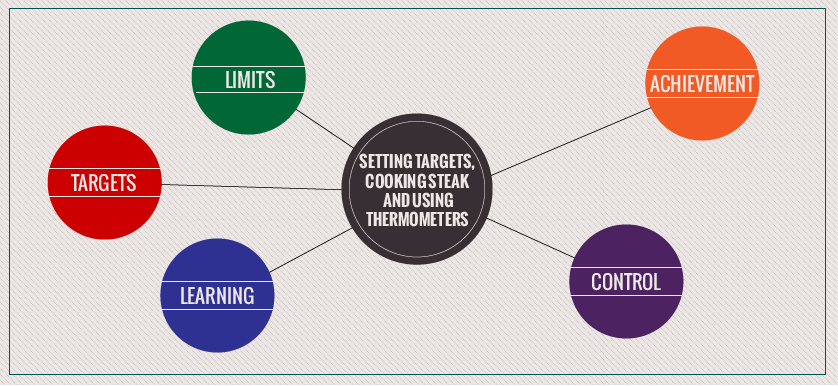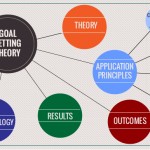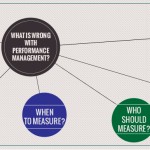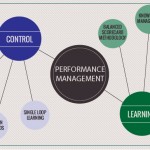Setting targets, cooking steak and using thermometers
smartKPIs.com Performance Architect update 7/2010
Setting targets is relatively easy if you want to make it easy – just pluck a number from the air, make it your target and strive to achieve it. However, there is more to target setting than a simple number selection.
One of the first things to be clarified when using target is why they are used. The answer might seem intuitively simple: to facilitate their achievement. Still, there are more reasons to using targets.
One of my favorite metaphors regarding using targets is the thermometer. Thermometers are used in multiple ways:
- To check if the temperature is within certain limits. In medicine 37° Celsius / 98.6° Fahrenheit is considered the average healthy temperature of a healthy human body. In a way it can be considered a target, however a flexible one, based on a variance interval around it.
- To ensure the temperature meets a specific value. For example, in cooking some dishes require a specific temperature to be reached as per the recipe. In this case, meeting the target temperature is required for the successful preparation of the dish.
Similarly, in other aspects of human administration, such as business, targets can be set for multiple reasons:
- To learn – targets provide a good reference point for evaluating achievement and comparing results.
- To motivate their achievement – as per the principles outlined by the Goal Setting Theory
- To control / ensure compliance – to verify the achievement of a specific limit required as part of the successful delivery of a business plan.
In time, the latter two reasons worked hand in hand to overshadow the learning aspect of target setting. They work fairly well in the short term and bonuses based on meeting short term targets have become the norm in business. However, their long term impact is in many instances less positive. The Global Financial Crisis is only an example of the manifestation in practice of this thinking.
Coming back at the thermometer metaphor is as we would use thermometers only to check the temperature of the steak we are cooking (satisfying our short term hunger), having forgotten to also using them to monitor the temperature of our body, for long term health benefits. In practice (medicine and manufacturing) this is not the case – thermometers used in equal measure for learning and ensuring compliance. In business administration it is as if we have forgotten about the learning aspects of target setting… Reward and recognition driven target setting is the norm.
The implications at cultural level are important. Targets for control in many instances result in a dangerous combination of human greed and mechanistic behavior. This combination, coupled with ineffective risk management is one of the factors that contributed to the demise of many organizations in recent history. Having a good steak is generally easier and more appealing than monitoring health and learning about ourselves.
Fortunately, the body has the ability to self regulate temperature. Organizations, on the other hand don’t have a mature self-regulation system, again mainly due to the relatively low level of sophistication of organizational culture today. As a result rewards and recognition target setting seems to be a relic of 19th century management prehistory, a reflection of our inability to find the right balance in human organizations. After all, it took hundreds of years to evolve the thermometer to its current form. Scientific management has been around for less than 100. Maybe it is just a question of time.
Stay smart! Enjoy smartKPIs.com!
Aurel Brudan Performance Architect, www.smartKPIs.com

Tags: Aurel Brudan, Food and Beverage performance, Performance Architect Update






